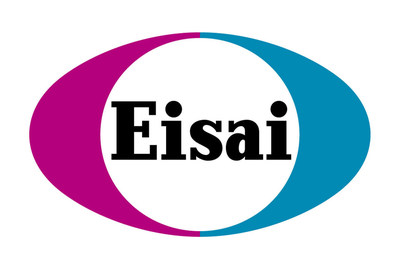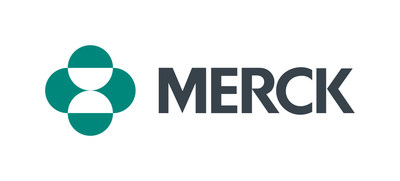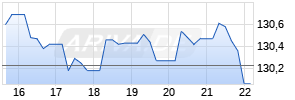
Eisai And Merck Provide Update on Supplemental New Drug Application (sNDA) for Lenvatinib in First-Line Unresectable Hepatocellular Carcinoma
PR Newswire
WOODCLIFF LAKE, N.J. and KENILWORTH, N.J., May 24, 2018
WOODCLIFF LAKE, N.J. and KENILWORTH, N.J., May 24, 2018 /PRNewswire/ -- Eisai Inc. and Merck (NYSE: MRK), known as MSD outside the United States and Canada, announced today that the U.S. Food and Drug Administration (FDA) has extended the action date for the supplemental New Drug Application (sNDA) for lenvatinib for the potential first-line treatment of patients with unresectable hepatocellular carcinoma (HCC).

The FDA has indicated that the extension of the Prescription Drug User Fee Act (PDUFA) date is needed to allow additional time for review of the application. The agency expects to complete the review on or before August 24, 2018, thus extending the target action date by a standard extension period of three months from the original PDUFA action date of May 24, 2018.
Eisai, as the marketing authorization holder, is working closely with the FDA to support the continued review of this application.
Lenvatinib (available as LENVIMA®) is approved by the U.S. FDA for the treatment of locally recurrent or metastatic, progressive, radioactive iodine-refractory differentiated thyroid cancer. Lenvatinib is also approved by the U.S. FDA in combination with everolimus for the treatment of patients with advanced renal cell carcinoma following one prior anti-angiogenic therapy.
About LENVIMA® (lenvatinib)
LENVIMA® (lenvatinib) is a kinase inhibitor that is indicated for:
- Differentiated Thyroid Cancer (DTC): single agent for patients with locally recurrent or metastatic, progressive, radioactive iodine-refractory DTC.
- Renal Cell Cancer (RCC): in combination with everolimus for patients with advanced RCC following one prior anti-angiogenic therapy.
Lenvatinib, discovered and developed by Eisai, is a receptor tyrosine kinase (RTK) inhibitor that inhibits the kinase activities of vascular endothelial growth factor (VEGF) receptors VEGFR1 (FLT1), VEGFR2 (KDR), and VEGFR3 (FLT4). Lenvatinib also inhibits other RTKs that have been implicated in pathogenic angiogenesis, tumor growth, and cancer progression in addition to their normal cellular functions, including fibroblast growth factor (FGF) receptors FGFR1-4; the platelet derived growth factor receptor alpha (PDGFRα), KIT, and RET.
Important Safety Information
Warnings and Precautions
- In DTC, hypertension was reported in 73% of patients on LENVIMA vs 16% with placebo (44% vs 4% grade ≥3). In RCC, hypertension was reported in 42% of patients on LENVIMA + everolimus vs 10% with everolimus alone (13% vs 2% grade 3). Serious complications of poorly controlled hypertension, including aortic dissection, have been reported. Systolic blood pressure ≥160 mmHg occurred in 29% of patients, and 21% of patients had a diastolic blood pressure ≥100 mmHg in the LENVIMA + everolimus–treated group. Blood pressure should be controlled prior to treatment and monitored throughout. Withhold dose for grade 3 hypertension despite optimal antihypertensive therapy; resume at reduced dose when controlled at grade ≤2. Discontinue for life-threatening hypertension
- In DTC, cardiac dysfunction was reported in 7% of patients on LENVIMA vs 2% with placebo (2% vs 0% grade ≥3). In RCC, decreased ejection fraction and cardiac failure were reported in 10% of patients on LENVIMA + everolimus vs 6% with everolimus alone (3% vs 2% grade 3). Monitor for signs/symptoms of cardiac decompensation. Withhold LENVIMA for development of grade 3 cardiac dysfunction until improvement to grade 0, 1, or baseline. Resume at reduced dose or discontinue based on severity and persistence of cardiac dysfunction. Discontinue for grade 4 cardiac dysfunction
- In DTC, arterial thromboembolic events were reported in 5% of patients on LENVIMA vs 2% with placebo (3% vs 1% grade ≥3). In RCC, arterial thromboembolic events were reported in 2% of patients on LENVIMA + everolimus vs 6% with everolimus alone (2% vs 4% grade ≥3). Discontinue following an arterial thrombotic event. The safety of resuming LENVIMA after an arterial thromboembolic event has not been established, and LENVIMA has not been studied in patients who have had an arterial thromboembolic event within the previous 6 months
- Across clinical studies in which 1,160 patients received LENVIMA monotherapy, hepatic failure (including fatal events) was reported in 3 patients and acute hepatitis in 1 patient. In DTC, ALT and AST increases (grade ≥3) occurred in 4% and 5% of patients on LENVIMA, respectively, vs 0% with placebo. In RCC, ALT and AST increases (grade ≥3) occurred in 3% of patients on LENVIMA + everolimus vs 2% and 0% with everolimus alone, respectively. Monitor liver function before initiation, then every 2 weeks for the first 2 months, and at least monthly thereafter during treatment. Withhold dose for liver impairment grade ≥3 until resolved to grade 0, 1, or baseline. Resume at reduced dose or discontinue based on severity/persistence of hepatotoxicity. Discontinue for hepatic failure
- In DTC, proteinuria was reported in 34% of patients on LENVIMA vs 3% with placebo (11% vs 0% grade 3). In RCC, proteinuria was reported in 31% of patients on LENVIMA + everolimus vs 14% with everolimus alone (8% vs 2% grade 3). Monitor for proteinuria before and during treatment. Withhold dose for proteinuria ≥2 g/24 h. Resume at reduced dose when proteinuria is <2 g/24 h. Discontinue for nephrotic syndrome
- In RCC, diarrhea was reported in 81% of patients on LENVIMA + everolimus vs 34% with everolimus alone (19% vs 2% grade ≥3). Initiate prompt medical management for the development of diarrhea. Monitor for dehydration. Withhold dose for diarrhea grade ≥3. Resume at a reduced dose when diarrhea resolves to grade 1 or baseline. Permanently discontinue LENVIMA for grade 4 diarrhea despite medical management
- In DTC, events of renal impairment were reported in 14% of patients on LENVIMA vs 2% with placebo (3% vs 1% grade ≥3). In RCC, events of renal impairment were reported in 18% of patients on LENVIMA + everolimus vs 12% with everolimus alone (10% vs 2% grade ≥3). Withhold LENVIMA for grade 3 or 4 renal failure/impairment. Resume at reduced dose or discontinue, depending on severity/persistence of renal impairment. Active management of diarrhea and any other gastrointestinal (GI) symptoms should be initiated for grade 1 events
- In DTC, events of GI perforation or fistula were reported in 2% of patients on LENVIMA vs 0.8% with placebo. In RCC, events of GI perforation, abscess, or fistula (grade ≥3) were reported in 2% of patients on LENVIMA + everolimus vs 0% with everolimus alone. Discontinue in patients who develop GI perforation or life-threatening fistula
- In DTC, QT/QTc interval prolongation was reported in 9% of patients on LENVIMA vs 2% with placebo (2% vs 0% >500 ms). In RCC, QTc interval increases >60 ms were reported in 11% of patients on LENVIMA + everolimus (6% >500 ms) vs 0% with everolimus alone. Monitor electrocardiograms in patients with congenital long QT syndrome, congestive heart failure, bradyarrhythmias, or patients taking drugs known to prolong the QT interval. Monitor and correct electrolyte abnormalities in all patients. Withhold dose for QTc interval prolongation >500 ms. Resume at reduced dose when QTc prolongation resolves to baseline
- In DTC, hypocalcemia (grade ≥3) was reported in 9% of patients on LENVIMA vs 2% with placebo. In RCC, hypocalcemia (grade ≥3) was reported in 6% of patients on LENVIMA + everolimus vs 2% with everolimus alone. Monitor blood calcium levels at least monthly and replace calcium as necessary. Interrupt and adjust LENVIMA as necessary
- Across clinical studies in which 1,160 patients received LENVIMA monotherapy, reversible posterior leukoencephalopathy syndrome (RPLS) was reported in 4 patients. Withhold LENVIMA for RPLS until fully resolved. Resume at reduced dose or discontinue based on the severity and persistence of neurologic symptoms
- Across clinical studies in which 1,160 patients received LENVIMA monotherapy, hemorrhage (grade ≥3) was reported in 2% of patients. In DTC, hemorrhagic events occurred in 35% of patients on LENVIMA vs 18% with placebo (2% vs 3% grade ≥3). There was 1 fatal intracranial hemorrhage case among 16 patients who received LENVIMA and had central nervous system metastases at baseline. The most frequently reported hemorrhagic event was epistaxis (11% grade 1, 1% grade 2). Discontinuation due to hemorrhagic events occurred in 1% of patients on LENVIMA. In RCC, hemorrhagic events occurred in 34% of patients on LENVIMA + everolimus vs 26% with everolimus alone (8% vs 2% grade ≥3). The most frequently reported hemorrhagic event was epistaxis (23% for LENVIMA + everolimus vs 24% with everolimus alone). There was 1 fatal cerebral hemorrhage case. Discontinuation due to hemorrhagic events occurred in 3% of patients on LENVIMA + everolimus. Consider the risk of severe or fatal hemorrhage associated with tumor invasion/infiltration of major blood vessels (eg, carotid artery). Withhold LENVIMA for the development of grade 3 hemorrhage until resolved to grade 0 or 1. Resume at reduced dose or discontinue based on severity/persistence of hemorrhage. Discontinue for grade 4 hemorrhage
- In DTC patients with normal baseline thyroid-stimulating hormone (TSH), elevation of TSH level above 0.5 mU/L was observed postbaseline in 57% of patients on LENVIMA vs 14% with placebo. In RCC, grade 1 or 2 hypothyroidism occurred in 24% of patients on LENVIMA + everolimus vs 2% with everolimus alone. In RCC patients with normal or low TSH at baseline, elevation of TSH was observed postbaseline in 60% of patients on LENVIMA + everolimus vs 3% with everolimus alone. Monitor thyroid function before initiation of and at least monthly throughout treatment. Treat hypothyroidism according to standard medical practice to maintain a euthyroid state
- Impaired wound healing, including fistula formation, has been reported in patients receiving LENVIMA. Temporary interruption of LENVIMA therapy should be considered in patients undergoing major surgical procedures
- LENVIMA can cause fetal harm when administered to a pregnant woman. Advise females of reproductive potential to use effective contraception during treatment with LENVIMA and for at least
Adverse Reactions
- In DTC, the most common adverse reactions (≥30%) observed in LENVIMA-treated patients vs placebo-treated patients were hypertension (73% vs 16%), fatigue (67% vs 35%), diarrhea (67% vs 17%), arthralgia/myalgia (62% vs 28%), decreased appetite (54% vs 18%), weight decrease (51% vs 15%), nausea (47% vs 25%), stomatitis (41% vs 8%), headache (38% vs 11%), vomiting (36% vs 15%), proteinuria (34% vs 3%), palmar-plantar erythrodysesthesia syndrome (32% vs 1%), abdominal pain (31% vs 11%), and dysphonia (31% vs 5%)
- In DTC, adverse reactions led to dose reductions in 68% of patients receiving LENVIMA and in 5% of patients receiving placebo; 18% of patients discontinued LENVIMA and 5% discontinued placebo for adverse reactions. The most common adverse reactions (≥10%) resulting in dose reductions of LENVIMA were hypertension (13%), proteinuria (11%), decreased appetite (10%), and diarrhea (10%); the most common adverse reactions (≥1%) resulting in discontinuation of LENVIMA were hypertension (1%) and asthenia (1%)
- In RCC, the most common adverse reactions (>30%) observed in patients treated with LENVIMA + everolimus vs everolimus alone were diarrhea (81% vs 34%), fatigue (73% vs 40%), arthralgia/myalgia (55% vs 32%), decreased appetite (53% vs 18%), vomiting (48% vs 12%), nausea (45% vs 16%), stomatitis/oral inflammation (44% vs 50%), hypertension/increased blood pressure (42% vs 10%), peripheral edema (42% vs 20%), cough (37% vs 30%), abdominal pain (37% vs 8%), dyspnea/exertional dyspnea (35% vs 28%), rash (35% vs 40%), weight decreased (34% vs 8%), hemorrhagic events (32% vs 26%), and proteinuria/urine protein present (31% vs 14%). The most common serious adverse reactions (≥5%) were renal failure (11%), dehydration (10%), anemia (6%), thrombocytopenia (5%), diarrhea (5%), vomiting (5%), and dyspnea (5%)
- In RCC, adverse reactions led to dose reductions or interruption in 89% of patients receiving LENVIMA + everolimus and in 54% of patients receiving everolimus alone. The most common adverse reactions (≥5%) resulting in dose reductions in the LENVIMA + everolimus–treated group were diarrhea (21%), fatigue (8%), thrombocytopenia (6%), vomiting (6%), nausea (5%), and proteinuria (5%). Treatment discontinuation due to an adverse reaction occurred in 29% of patients in the LENVIMA + everolimus–treated group and in 12% of patients in the everolimus-treated group
Use in Specific Populations
- Because of the potential for serious adverse reactions in nursing infants, advise women to discontinue breastfeeding during treatment
- LENVIMA may result in reduced fertility in females of reproductive potential and may result in damage to male reproductive tissues, leading to reduced fertility of unknown duration
For more information about LENVIMA, click here for the full Prescribing Information.
About the Eisai and Merck Strategic Collaboration
In March 2018, Eisai and Merck, through an affiliate, entered into a strategic collaboration for the worldwide co-development and co-commercialization of LENVIMA. Under the agreement, the companies will develop and commercialize LENVIMA jointly, both as monotherapy and in combination with Merck's anti-PD-1 therapy. In addition to ongoing clinical studies of the combination, the companies will jointly initiate new clinical studies evaluating the combination to support 11 potential indications in six types of cancer, as well as a basket trial targeting six additional cancer types. The combination is not approved in any cancer types today.
About Eisai Inc.
At Eisai Inc., human health care (hhc) is our goal. We give our first thoughts to patients and their families, and helping to increase the benefits health care provides. As the U.S. pharmaceutical subsidiary of Tokyo-based Eisai Co., Ltd., we have a passionate commitment to patient care that is the driving force behind our efforts to discover and develop innovative therapies to help address unmet medical needs.
Eisai is a fully integrated pharmaceutical business that operates in two global business groups: oncology and neurology (dementia-related diseases and neurodegenerative diseases). Each group functions as an end-to-end global business with discovery, development, manufacturing and marketing capabilities. Our U.S. headquarters, commercial and clinical development organizations are located in New Jersey; our discovery labs are in Massachusetts and Pennsylvania; and our global demand chain organization resides in Maryland and North Carolina. To learn more about Eisai Inc., please visit us at eisai.com/us.
Merck's Focus on Cancer
Our goal is to translate breakthrough science into innovative oncology medicines to help people with cancer worldwide. At Merck, helping people fight cancer is our passion and supporting accessibility to our cancer medicines is our commitment. Our focus is on pursuing research in immuno-oncology and we are accelerating every step in the journey – from lab to clinic – to potentially bring new hope to people with cancer.
As part of our focus on cancer, Merck is committed to exploring the potential of immuno-oncology with one of the fastest-growing development programs in the industry across more than 30 tumor types. We also continue to strengthen our immuno-oncology portfolio through strategic acquisitions and are prioritizing the development of several promising immunotherapeutic candidates with the potential to improve the treatment of advanced cancers.
For more information about our oncology clinical trials, visit www.merck.com/clinicaltrials.
About Merck
For more than a century, Merck, a leading global biopharmaceutical company known as MSD outside of the United States and Canada, has been inventing for life, bringing forward medicines and vaccines for many of the world's most challenging diseases. Through our prescription medicines, vaccines, biologic therapies and animal health products, we work with customers and operate in more than 140 countries to deliver innovative health solutions. We also demonstrate our commitment to increasing access to health care through far-reaching policies, programs and partnerships. Today, Merck continues to be at the forefront of research to advance the prevention and treatment of diseases that threaten people and communities around the world - including cancer, cardio-metabolic diseases, emerging animal diseases, Alzheimer's disease and infectious diseases including HIV and Ebola. For more information, visit www.merck.com and connect with us on Twitter, Facebook, Instagram, YouTube and LinkedIn.
Forward-Looking Statement of Merck & Co., Inc., Kenilworth, N.J., USA
This news release of Merck & Co., Inc., Kenilworth, N.J., USA (the "company") includes "forward-looking statements" within the meaning of the safe harbor provisions of the U.S. Private Securities Litigation Reform Act of 1995. These statements are based upon the current beliefs and expectations of the company's management and are subject to significant risks and uncertainties. There can be no guarantees with respect to pipeline products that the products will receive the necessary regulatory approvals or that they will prove to be commercially successful. If underlying assumptions prove inaccurate or risks or uncertainties materialize, actual results may differ materially from those set forth in the forward-looking statements.
Risks and uncertainties include but are not limited to, general industry conditions and competition; general economic factors, including interest rate and currency exchange rate fluctuations; the impact of pharmaceutical industry regulation and health care legislation in the United States and internationally; global trends toward health care cost containment; technological advances, new products and patents attained by competitors; challenges inherent in new product development, including obtaining regulatory approval; the company's ability to accurately predict future market conditions; manufacturing difficulties or delays; financial instability of international economies and sovereign risk; dependence on the effectiveness of the company's patents and other protections for innovative products; and the exposure to litigation, including patent litigation, and/or regulatory actions.
The company undertakes no obligation to publicly update any forward-looking statement, whether as a result of new information, future events or otherwise. Additional factors that could cause results to differ materially from those described in the forward-looking statements can be found in the company's 2017 Annual Report on Form 10-K and the company's other filings with the Securities and Exchange Commission (SEC) available at the SEC's Internet site (www.sec.gov).

![]() View original content with multimedia:http://www.prnewswire.com/news-releases/eisai-and-merck-provide-update-on-supplemental-new-drug-application-snda-for-lenvatinib-in-first-line-unresectable-hepatocellular-carcinoma-300654812.html
View original content with multimedia:http://www.prnewswire.com/news-releases/eisai-and-merck-provide-update-on-supplemental-new-drug-application-snda-for-lenvatinib-in-first-line-unresectable-hepatocellular-carcinoma-300654812.html
SOURCE Eisai Inc.

Mehr Nachrichten zur Merck & Co., inc. Aktie kostenlos abonnieren
(Mit der Bestellung akzeptierst du die Datenschutzhinweise)

Hinweis: ARIVA.DE veröffentlicht in dieser Rubrik Analysen, Kolumnen und Nachrichten aus verschiedenen Quellen. Die ARIVA.DE AG ist nicht verantwortlich für Inhalte, die erkennbar von Dritten in den „News“-Bereich dieser Webseite eingestellt worden sind, und macht sich diese nicht zu Eigen. Diese Inhalte sind insbesondere durch eine entsprechende „von“-Kennzeichnung unterhalb der Artikelüberschrift und/oder durch den Link „Um den vollständigen Artikel zu lesen, klicken Sie bitte hier.“ erkennbar; verantwortlich für diese Inhalte ist allein der genannte Dritte.




